Experimental Study on the Wind Erosion Resistance of Aeolian Sand Solidified by Microbially Induced Calcite Precipitation (MICP)
Abstract
:1. Introduction
2. Materials and Methods
2.1. Test Materials
2.2. Sample Preparation
2.3. Test Method
3. Results and Discussion
3.1. Analysis of the Effect Caused by Wind Velocity
3.2. Analysis of the Effect Caused by Deflation Angle
3.3. Analysis of the Effect Caused by Wind Erosion Cycles
3.4. Analysis of Morphological Characteristics of Aeolian Sand
3.5. Analysis of the MICP Solidification Mechanism
4. Conclusions
- The mass loss rate of aeolian sand is positively correlated with wind velocity and keeps increasing with the increase in the wind erosion cycle. When the deflation angle and number of wind erosion cycle are constant and the wind velocity increases from 7 m/s to 13 m/s, the maximum mass loss rate of aeolian sand reaches 92.68%.
- The mass loss rate of aeolian sand increases with the increase in the deflation angle. The mass loss rate of aeolian sand also increases with the increasing number of wind erosion cycles. When the wind velocity and number of wind erosion cycle are constant and the deflation angle increases from 0° to 45°, the mass loss rate of aeolian sand shows a stepwise upward trend.
- Under the action of different wind speeds, the mass loss rate of aeolian sand increases with the increase in wind erosion cycles, and the increase amplitude becomes larger with the increase in the deflation angle. When the wind velocity is 7 m/s and the deflation angle is 45°, the mass loss rate of aeolian sand after 1, 3, and 5 wind erosion cycles is 4.19%, 7.57%, and 9.11%, respectively.
- Loose aeolian sand has poor resistance against wind erosion. With the increase in wind velocity, the aeolian sand in the middle of the sand table is gradually blown away. Only a small amount of aeolian sand is distributed at the end near the wind source and the end far from the wind source. The solid layer formed on the surface of MICP-solidified aeolian sand has a certain ability to resist wind erosion. The mass loss rate of such aeolian sand is only 63.6% when the wind velocity is 13 m/s.
- Quartz is the main mineral component of loose aeolian sand, while new calcite is the main mineral component of MICP-solidified aeolian sand. CaCO3 crystals generated by MICP mineralization were mostly distributed on sand particle surfaces, in sand particle pores, and between sand particles to achieve covering, filling, and cementing effects.
- The solidification of aeolian sand will be particularly important for subgrade filling, soil anti-seepage, and erosion resistance, as well as slope protection. However, the environment in the desert area is complex and harsh, and factors such as freeze–thaw and ultraviolet light have not been effectively solved, which is expected to be supplemented and improved on in future related research.
Author Contributions
Funding
Institutional Review Board Statement
Informed Consent Statement
Data Availability Statement
Conflicts of Interest
References
- Pinho-Lopes, M. Sand reinforced with recycled cotton textiles from waste blue-jeans: Stress–strain response. Int. J. Geosynth. Ground Eng. 2022, 8, 59. [Google Scholar] [CrossRef]
- Fattahi, S.M.; Soroush, A.; Huang, N. Wind erosion control using inoculation of aeolian sand with cyanobacteria. Land Degrad. Dev. 2020, 31, 2104–2116. [Google Scholar] [CrossRef]
- Arias-Trujillo, J.; Matías-Sanchez, A.; Cantero, B.; López-Querol, S. Effect of polymer emulsion on the bearing capacity of aeolian sand under extreme confinement conditions. Constr. Build. Mater. 2020, 236, 117473. [Google Scholar] [CrossRef]
- Almajed, A.; Lateef, M.A.; Moghal, A.A.B.; Lemboye, K. State-of-the-art review of the applicability and challenges of microbial-induced calcite precipitation (MICP) and enzyme-induced calcite precipitation (EICP) techniques for geotechnical and geoenvironmental applications. Crystals 2021, 11, 370. [Google Scholar] [CrossRef]
- Stocks-Fischer, S.; Galinat, J.K.; Bang, S.S. Microbiological precipitation of CaCO3. Soil Biol. Biochem. 1999, 31, 1563–1571. [Google Scholar] [CrossRef]
- Rahman, M.M.; Hora, R.N.; Ahenkorah, I.; Beecham, S.; Karim, M.R.; Iqbal, A. State-of-the-art review of microbial-induced calcite precipitation and its sustainability in engineering applications. Sustainability 2020, 12, 6281. [Google Scholar] [CrossRef]
- Mengistu, D.M.; Mamo, A.N.; Gemeda, M.T. Isolation and characterization of calcite precipitating bacteria from soda lakes that have the capability to produce biocement for self-healing concretes. Constr. Build. Mater. 2023, 408, 133510. [Google Scholar] [CrossRef]
- Wilcox, S.M.; Mulligan, C.N.; Neculita, C.M. Microbially Induced Calcium Carbonate Precipitation as a Bioremediation Technique for Mining Waste. Toxics 2024, 12, 107. [Google Scholar] [CrossRef] [PubMed]
- Fouladi, A.S.; Arulrajah, A.; Chu, J.; Horpibulsuk, S. Application of Microbially Induced Calcite Precipitation (MICP) technology in construction materials: A comprehensive review of waste stream contributions. Constr. Build. Mater. 2023, 388, 131546. [Google Scholar] [CrossRef]
- Ghalandarzadeh, S.; Maghoul, P.; Ghalandarzadeh, A.; Courcelles, B. Effect of nanoparticle-enhanced biocementation in kaolinite clay by microbially induced calcium carbonate precipitation. Constr. Build. Mater. 2024, 414, 134939. [Google Scholar] [CrossRef]
- Behzadipour, H.; Sadrekarimi, A. Effect of microbial-induced calcite precipitation on shear strength of gold mine tailings. Bull. Eng. Geol. Environ. 2023, 82, 331. [Google Scholar] [CrossRef]
- Prongmanee, N.; Horpibulsuk, S.; Dulyasucharit, R.; Noulmanee, A.; Boueroy, P.; Chancharoonpong, C. Novel and simplified method of producing microbial calcite powder for clayey soil stabilization. Geomech. Energy Environ. 2023, 35, 100480. [Google Scholar] [CrossRef]
- Wang, Y.; Wang, Y.; Konstantinou, C. Strength Behavior of Temperature-Dependent MICP-Treated Soil. J. Geotech. Geoenviron. Eng. 2023, 149, 04023116. [Google Scholar] [CrossRef]
- Jiang, Z.; Wei, R.; Dai, D.; Li, L.; Shang, Z.; Tang, J.; Peng, J.; Li, P. Experimental Study on Bio-Reinforcement of Calcareous Sand through Hydrochloric Acid Solution Precipitation into Cementing Solution. Materials 2023, 16, 6348. [Google Scholar] [CrossRef] [PubMed]
- Naskar, J.; Sharma, A.K. Assessment of enhanced strength and stiffness properties of bio-engineered coal fly ash. Constr. Build. Mater. 2024, 413, 134793. [Google Scholar] [CrossRef]
- Dubey, A.A.; Devrani, R.; Ravi, K.; Dhami, N.K.; Mukherjee, A.; Sahoo, L. Experimental investigation to mitigate aeolian erosion via biocementation employed with a novel ureolytic soil isolate. Aeolian Res. 2021, 52, 100727. [Google Scholar] [CrossRef]
- Devrani, R.; Dubey, A.A.; Ravi, K.; Sahoo, L. Applications of bio-cementation and bio-polymerization for aeolian erosion control. J. Arid Environ. 2021, 187, 104433. [Google Scholar] [CrossRef]
- Hang, L.; Yang, E.; Zhou, Y.; Song, W.; He, J. Microbially induced calcite precipitation (MICP) for stabilization of desert sand against the wind-induced erosion: A parametric study. Sustainability 2022, 14, 11409. [Google Scholar] [CrossRef]
- GB/T 50123-2019; Standard for Geotechnical Testing Method. Construction Ministry of PRC: Beijing, China, 2019.
- Nikseresht, F.; Landi, A.; Sayyad, G.; Ghezelbash, G.R.; Schulin, R. Sugarecane molasse and vinasse added as microbial growth substrates increase calcium carbonate content, surface stability and resistance against wind erosion of desert soils. J. Environ. Manag. 2020, 268, 110639. [Google Scholar] [CrossRef]
- Meng, H.; Shu, S.; Gao, Y.; He, J.; Wan, Y. Kitchen waste for Sporosarcina pasteurii cultivation and its application in wind erosion control of desert soil via microbially induced carbonate precipitation. Acta Geotech. 2021, 16, 4045–4059. [Google Scholar] [CrossRef]
- Tominaga, Y.; Okaze, T.; Mochida, A. Wind tunnel experiment and CFD analysis of sand erosion/deposition due to wind around an obstacle. J. Wind Eng. Ind. Aerod. 2018, 182, 262–271. [Google Scholar] [CrossRef]
- Naeimi, M.; Chu, J.; Khosroshahi, M.; Zenouzi, L.K. Soil stabilization for dunes fixation using microbially induced calcium carbonate precipitation. Geoderma 2023, 429, 116183. [Google Scholar] [CrossRef]
- Wang, Z.; Zhang, N.; Ding, J.; Lu, C.; Jin, Y. Experimental study on wind erosion resistance and strength of sands treated with microbial-induced calcium carbonate precipitation. Adv. Mater. Sci. Eng. 2018, 2018, 3463298. [Google Scholar] [CrossRef]
- An, R.; Gao, H.; Zhang, X.; Chen, X.; Wang, Y.; Xu, H. Mechanical behaviour and microstructure of granite residual bio-cemented soil by microbially induced calcite precipitation with different cementation–solution concentrations. Environ. Earth Sci. 2024, 83, 31. [Google Scholar] [CrossRef]
- Li, J.; Ma, J.; Tong, Y.; Fei, E.; Zhang, Z. Study on fractal characteristics of pores of NAS reinforced by MICP under the control of electric field. Constr. Build. Mater. 2021, 271, 121540. [Google Scholar] [CrossRef]
- Srinivas, M.K.; Alengaram, U.J.; Ibrahim, S.; Vello, V.; Phang, S.M. Feasibility study on the use of microalgae as an external crack healing agent for cement mortar rehabilitation. J. Sustain. Cem.-Based Mater. 2024, 13, 17–32. [Google Scholar] [CrossRef]

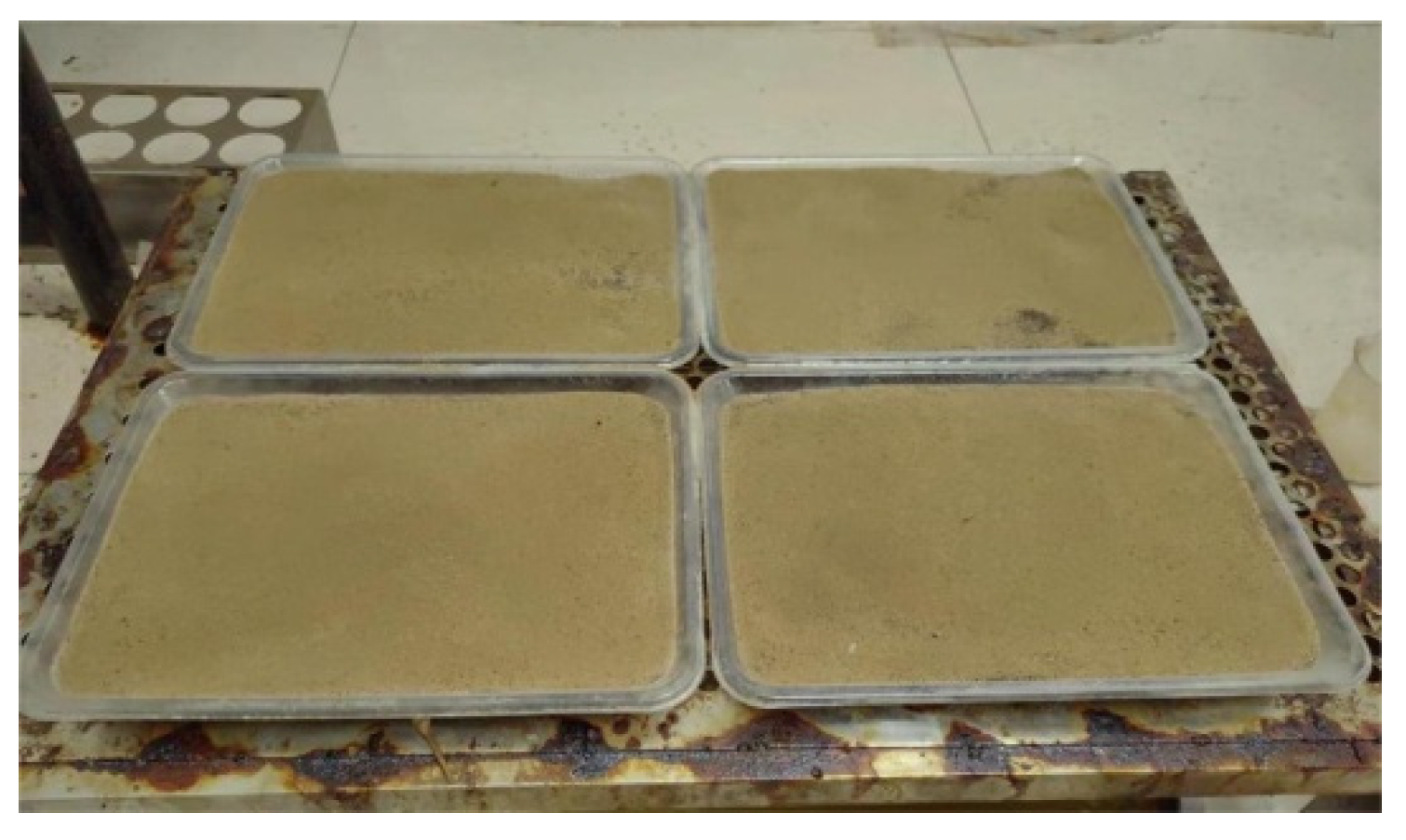

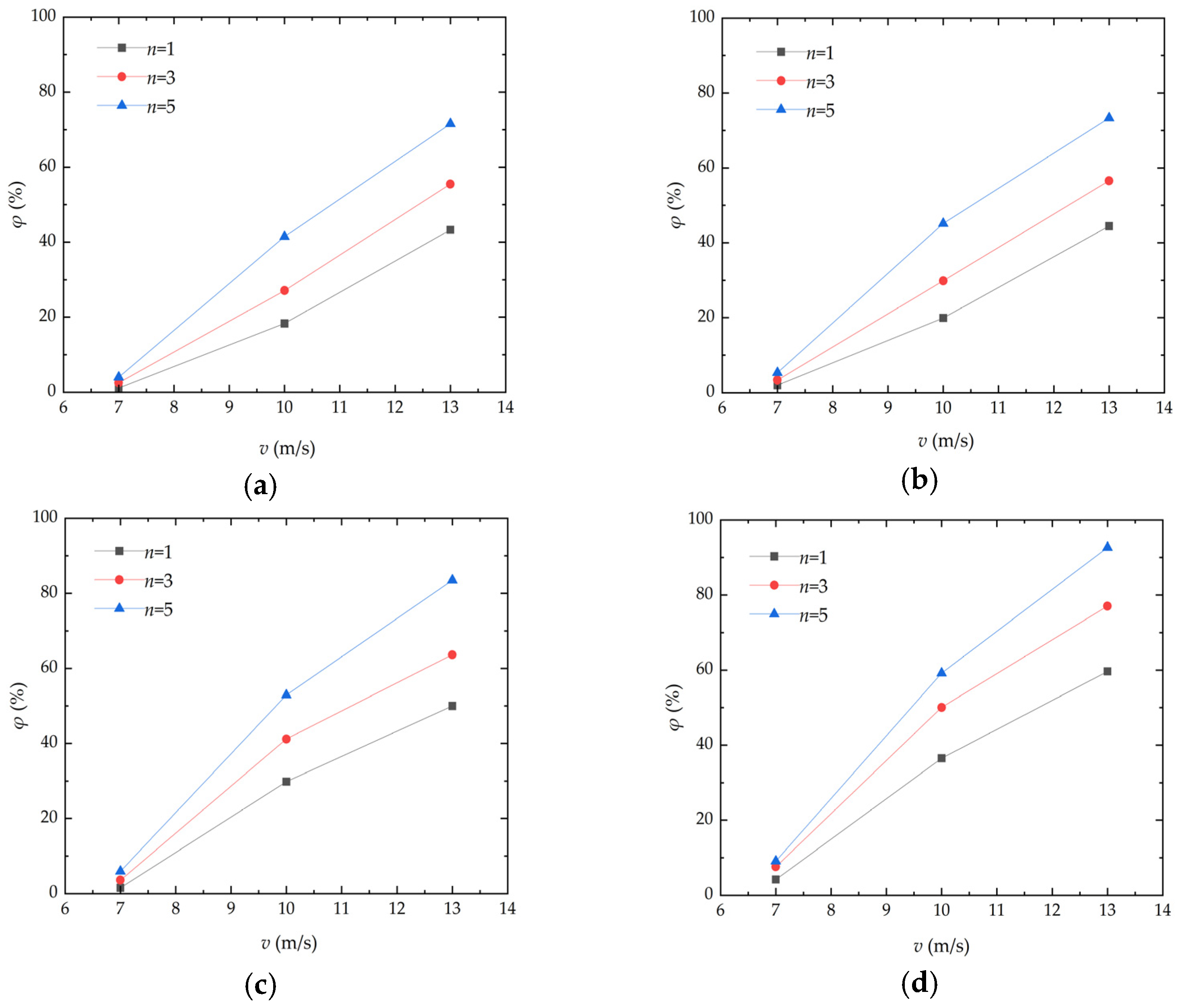

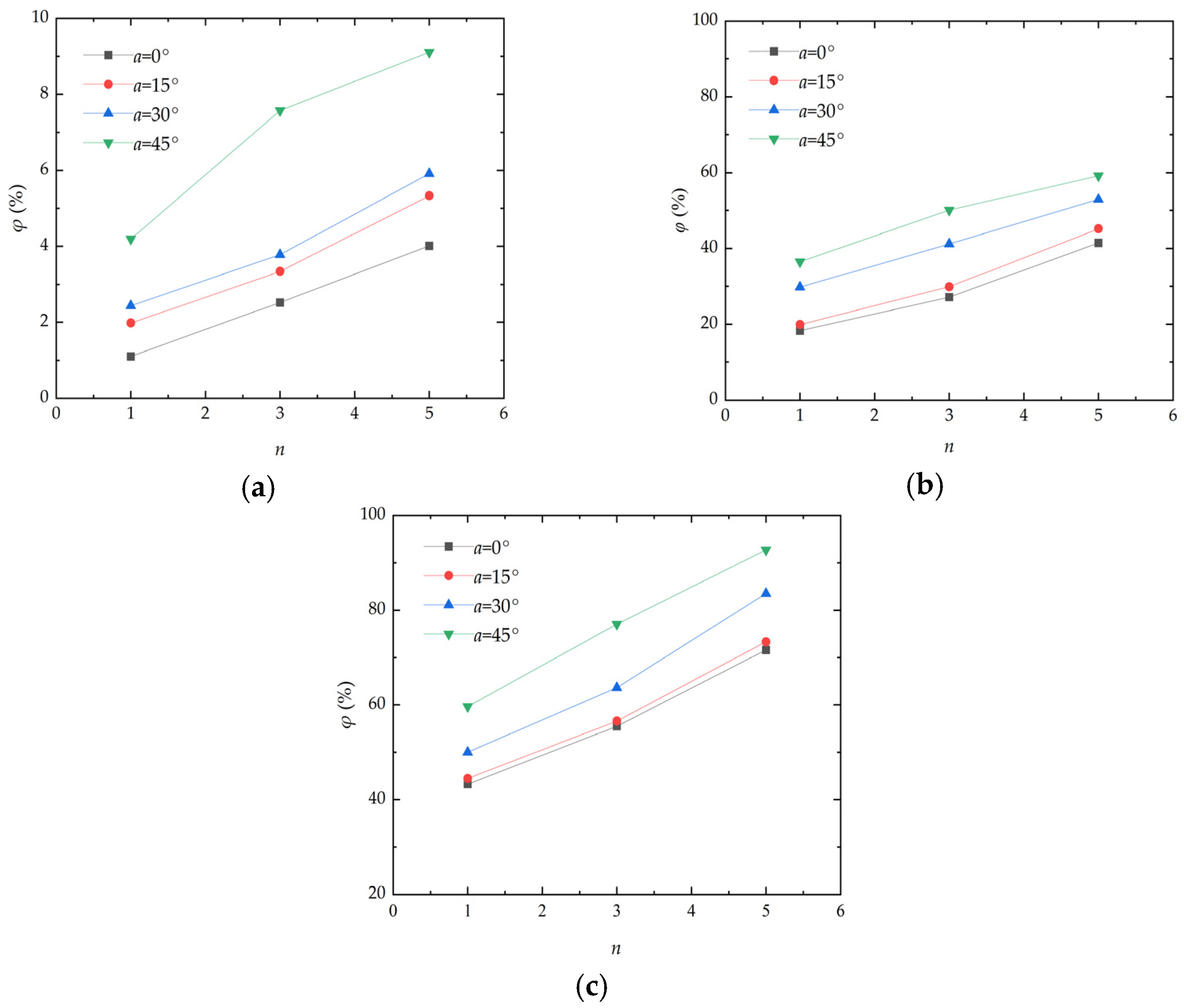
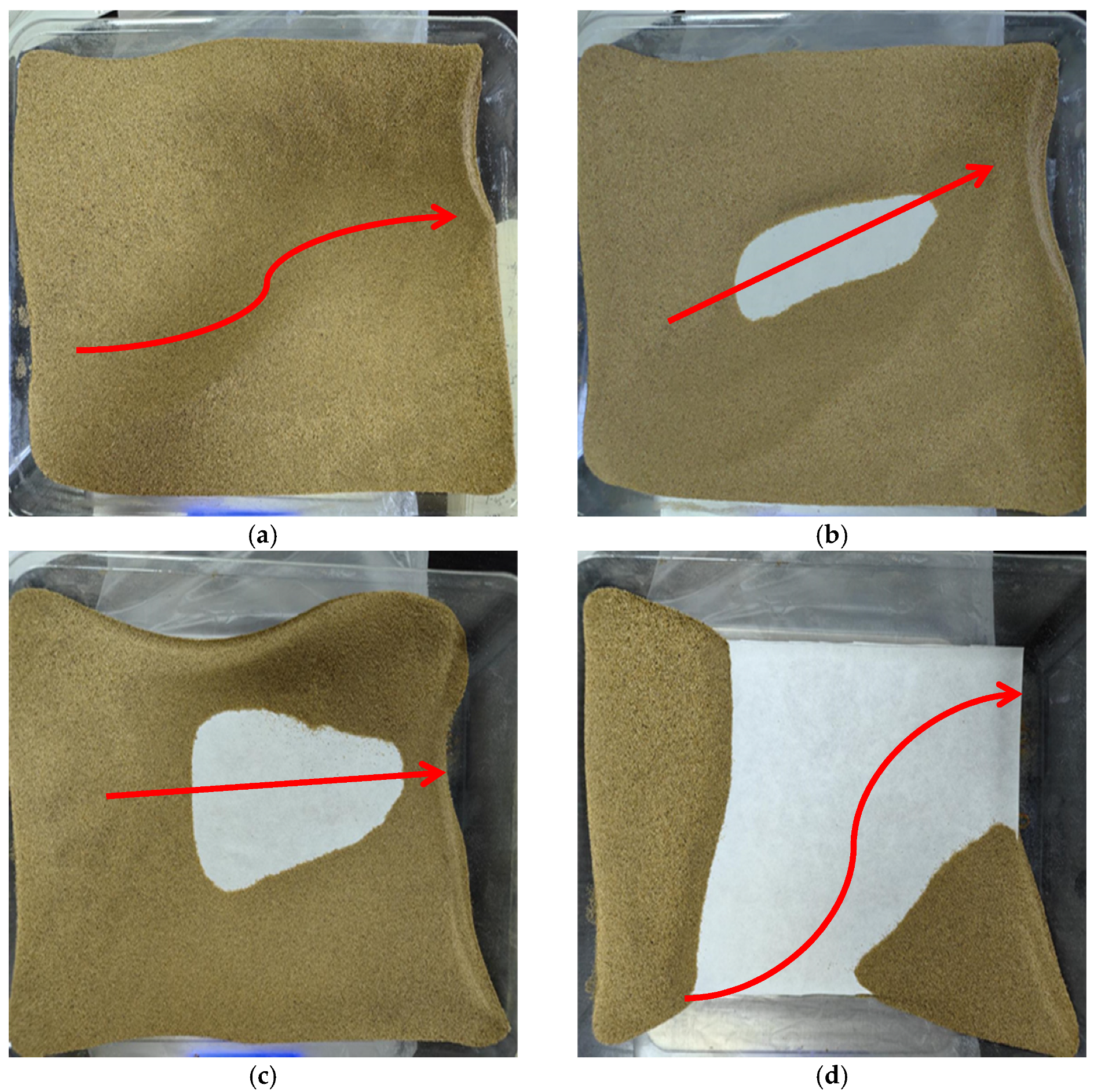
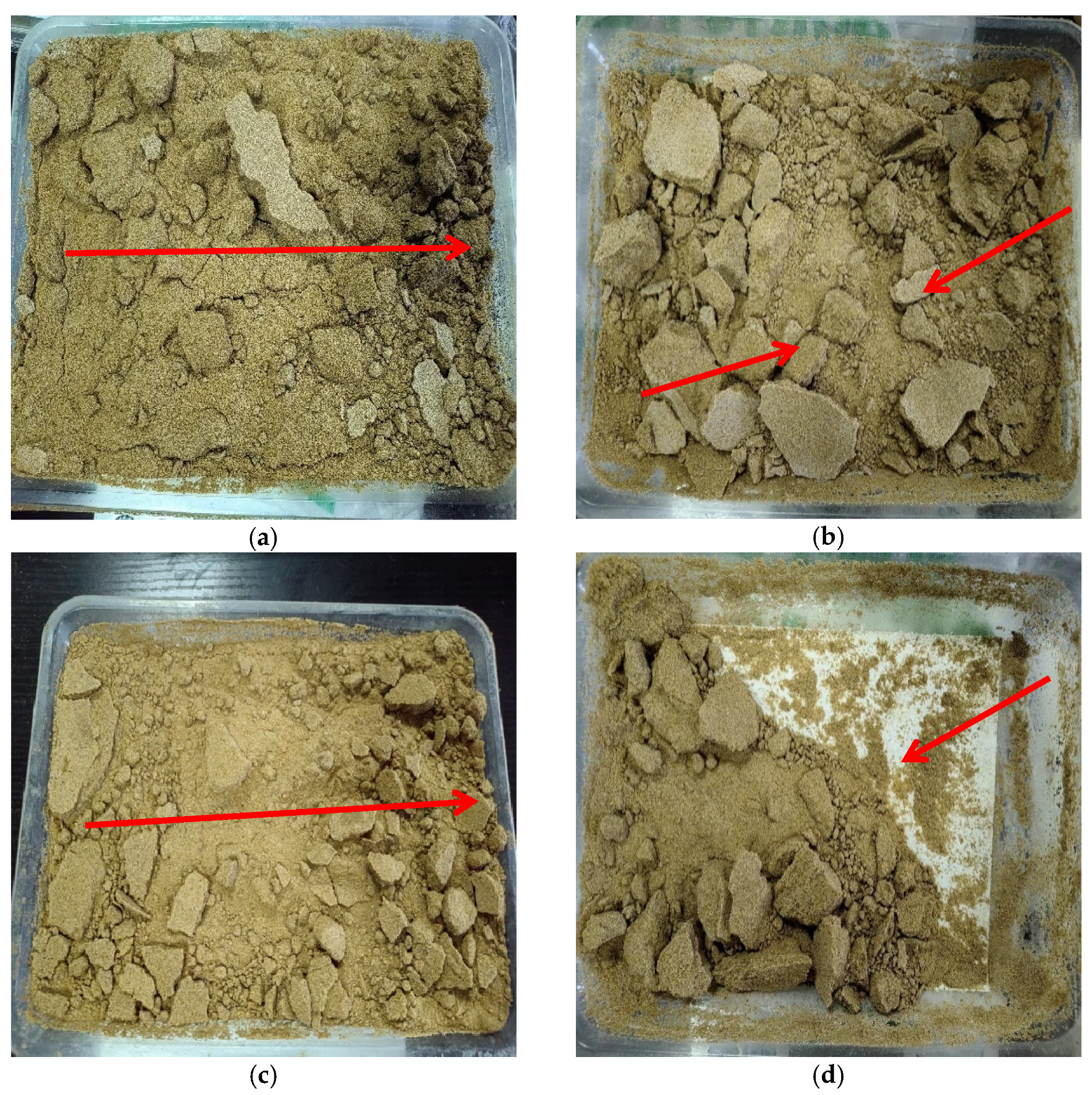
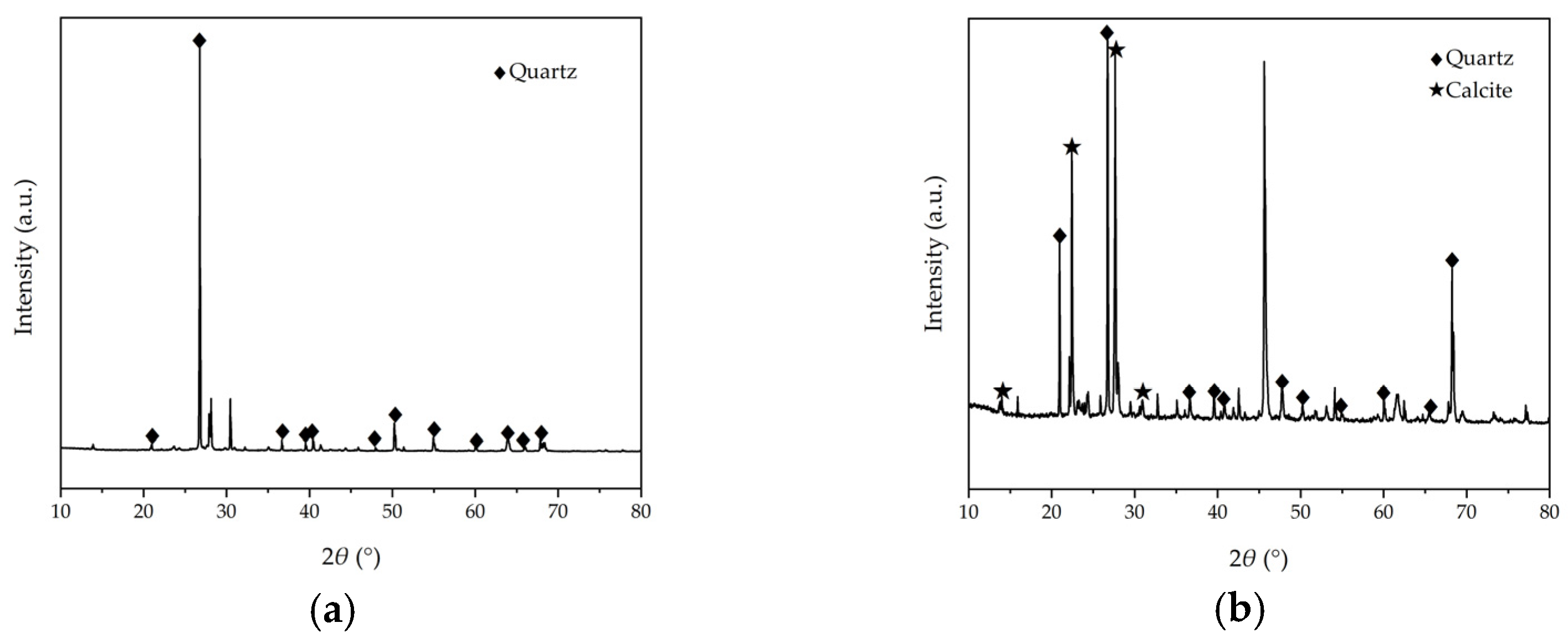

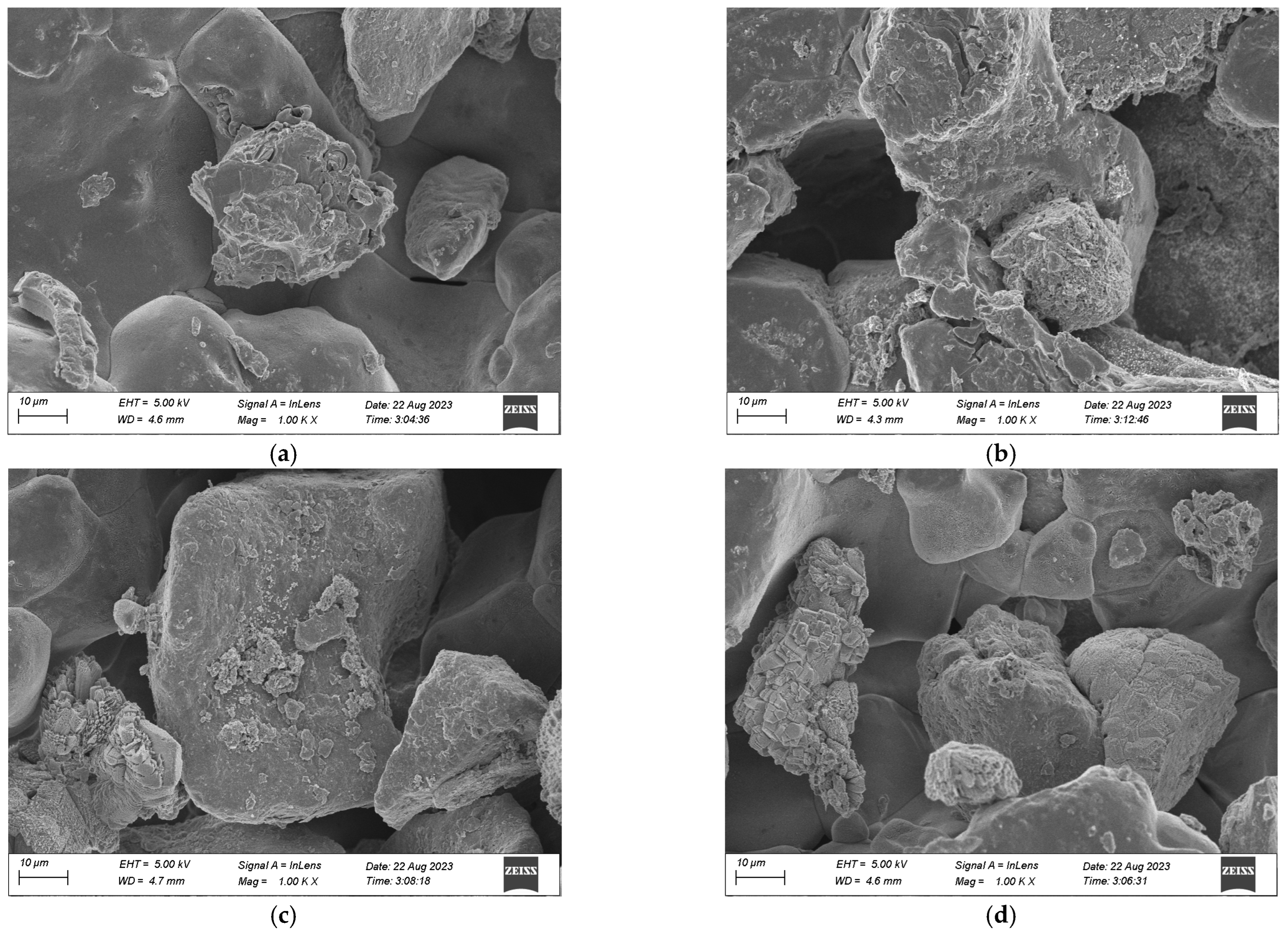
| Gs | ρdmax (g/cm3) | ρdmin (g/cm3) | d10 (mm) | d30 (mm) | d60 (mm) | Cu | Cc |
|---|---|---|---|---|---|---|---|
| 2.65 | 1.85 | 1.47 | 0.086 | 0.120 | 0.198 | 2.30 | 0.85 |
| Deflation Angle (°) | Wind Velocity (m/s) | Wind Erosion Cycle |
|---|---|---|
| 0 | 7 | 1, 3, 5 |
| 10 | 1, 3, 5 | |
| 13 | 1, 3, 5 | |
| 15 | 7 | 1, 3, 5 |
| 10 | 1, 3, 5 | |
| 13 | 1, 3, 5 | |
| 30 | 7 | 1, 3, 5 |
| 10 | 1, 3, 5 | |
| 13 | 1, 3, 5 | |
| 45 | 7 | 1, 3, 5 |
| 10 | 1, 3, 5 | |
| 13 | 1, 3, 5 |
Disclaimer/Publisher’s Note: The statements, opinions and data contained in all publications are solely those of the individual author(s) and contributor(s) and not of MDPI and/or the editor(s). MDPI and/or the editor(s) disclaim responsibility for any injury to people or property resulting from any ideas, methods, instructions or products referred to in the content. |
© 2024 by the authors. Licensee MDPI, Basel, Switzerland. This article is an open access article distributed under the terms and conditions of the Creative Commons Attribution (CC BY) license (https://creativecommons.org/licenses/by/4.0/).
Share and Cite
Qu, J.; Li, G.; Ma, B.; Liu, J.; Zhang, J.; Liu, X.; Zhang, Y. Experimental Study on the Wind Erosion Resistance of Aeolian Sand Solidified by Microbially Induced Calcite Precipitation (MICP). Materials 2024, 17, 1270. https://doi.org/10.3390/ma17061270
Qu J, Li G, Ma B, Liu J, Zhang J, Liu X, Zhang Y. Experimental Study on the Wind Erosion Resistance of Aeolian Sand Solidified by Microbially Induced Calcite Precipitation (MICP). Materials. 2024; 17(6):1270. https://doi.org/10.3390/ma17061270
Chicago/Turabian StyleQu, Jing, Gang Li, Bin Ma, Jia Liu, Jinli Zhang, Xing Liu, and Yijia Zhang. 2024. "Experimental Study on the Wind Erosion Resistance of Aeolian Sand Solidified by Microbially Induced Calcite Precipitation (MICP)" Materials 17, no. 6: 1270. https://doi.org/10.3390/ma17061270






